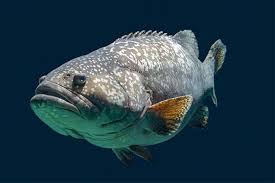Exploring the Combination of Dragons and Feng Shui in Chinese Architecture

In traditional Chinese culture, dragons are revered as symbols of power, prosperity, and good fortune. The combination of dragons and Feng Shui, an ancient Chinese system of geomancy, plays a crucial role in the design and construction of homes and buildings. Feng Shui is the art of arranging living spaces to promote harmony and balance between humans and their environment. By integrating the powerful image of the dragon into architectural planning, Feng Shui practitioners aim to harness the dragon’s positive energy to enhance the well-being, prosperity, and success of the inhabitants.
In this article, we will explore how the symbol of the dragon interacts with Feng Shui principles in home construction, focusing on the dragon’s significance in the physical layout, placement, and overall energy flow within Chinese architecture.
The Symbolism of the Dragon in Chinese Culture
The dragon in Chinese culture is a powerful and auspicious symbol. Unlike the fearsome Western dragons, Chinese dragons are considered benevolent creatures associated with strength, wisdom, protection, and good fortune. They are believed to be the rulers of the natural world, particularly in controlling weather patterns such as rainfall, which is vital for agricultural prosperity. The dragon also symbolizes imperial authority and the divine right to rule, as emperors were often referred to as “the dragon’s son” and their thrones were called the “Dragon Throne.”
In Chinese mythology, dragons are said to possess the ability to transform and adapt, which also ties them to the concept of growth, renewal, and prosperity. Dragons are often depicted as guardian figures, with the power to safeguard homes, families, and entire communities. Their protective and auspicious qualities make them an integral part of Feng Shui practices, particularly in the context of building homes or designing spaces intended to attract positive energy.
Feng Shui and Its Role in Chinese Architecture
Feng Shui is a practice that dates back thousands of years and is deeply rooted in Chinese philosophy. It is based on the belief that the environment, both natural and built, influences human health, success, and well-being. In the context of architecture, Feng Shui involves arranging and designing spaces to create a balanced flow of chi (氣), or energy, ensuring that the occupants experience peace, prosperity, and good health.
Feng Shui practitioners consider a variety of factors when designing spaces, such as the orientation of the building, the use of natural light, the arrangement of furniture, and the placement of objects that bring good fortune or ward off negative energy. One of the key elements in Feng Shui is the concept of the five elements—wood, fire, earth, metal, and water—which must be harmonized to maintain balance and promote positive energy.
The dragon, as a powerful symbol of auspicious energy, plays a significant role in this balance. It is associated with the element of water, which is believed to bring wealth and abundance. In Feng Shui, water is also symbolic of fluidity and adaptability, qualities that are embodied in the dragon’s ability to navigate through the clouds and control rainstorms. As a result, the dragon is seen as an essential figure for promoting prosperity and well-being in the built environment.
Dragons in Feng Shui: Enhancing Prosperity and Good Fortune
Incorporating the dragon into Feng Shui designs is believed to bring about prosperity, success, and positive energy. The dragon’s role in enhancing wealth is linked to its association with water, particularly flowing water, which symbolizes the flow of wealth and opportunities. According to Feng Shui principles, the dragon’s presence can direct the flow of energy in a favorable direction, guiding it toward areas that are associated with abundance and success.
One of the key ways that dragons are incorporated into Feng Shui design is through their placement in relation to water features such as fountains, ponds, or rivers. The dragon, when placed near water, symbolizes the flow of fortune, bringing wealth and good opportunities to the inhabitants of the space. In homes, placing dragon figurines or images near water elements such as a fish tank or a water fountain can help activate the wealth sector of the home and encourage financial prosperity.
The dragon is also considered a protector of the home. When placed at the entrance or in prominent areas within the home, dragons are believed to ward off negative energy and offer protection from harm. This practice is especially common in the placement of dragon statues or carvings at the entrance of homes or businesses to ensure that only positive energy enters the space. The presence of the dragon is thought to provide a shield against misfortune, bad luck, and malicious forces.
Dragons and Their Placement in the Home
In Feng Shui, the positioning of elements within the home is critical for achieving balance and harmony. The dragon’s placement within a home is carefully considered to ensure that it brings positive energy and enhances the well-being of the inhabitants.
The dragon and the wealth corner: In Feng Shui, the wealth corner is located in the farthest left corner of a space, based on the entrance. This area is associated with the element of water and is linked to prosperity and abundance. By placing a dragon figurine or artwork in the wealth corner, it is believed that the dragon will activate the flow of wealth and increase the chances of financial success. The dragon’s connection to water reinforces the idea of an abundant flow of resources and opportunities.
The dragon and the career sector: The career sector is another important area in Feng Shui, and it is traditionally located in the middle front of the home or office. This sector is linked to personal growth, ambition, and success in professional endeavors. By positioning a dragon in this area, it is believed that the dragon will enhance the individual’s career prospects and help them achieve their professional goals. The dragon’s energy encourages ambition, determination, and the drive to succeed.
The dragon and the protection of the home: Placing a dragon near the entrance of a home or at the front gate is a common Feng Shui practice. This placement serves to protect the inhabitants from negative energies and hostile forces, ensuring the safety and security of the home. The dragon is believed to act as a guardian, watching over the family and warding off any ill intentions. In this context, the dragon serves as a divine protector, safeguarding the peace and harmony of the household.
The Dragon and the Importance of Balance in Feng Shui
One of the fundamental principles of Feng Shui is balance. A well-balanced environment promotes harmony and ensures that the energy in the space flows freely and positively. The dragon’s role in Feng Shui is to maintain this balance, ensuring that the five elements—wood, fire, earth, metal, and water—are in harmony. The dragon’s association with water is particularly important in this regard, as water helps balance the other elements and ensures that the flow of energy is neither too stagnant nor too overwhelming.
However, it is essential to exercise caution when incorporating the dragon into Feng Shui designs. Overusing dragon imagery or placing dragons in the wrong areas of the home can lead to an imbalance in the energy flow, potentially creating negative effects. For example, placing too many dragons in the wealth corner could lead to an excessive focus on material wealth, neglecting other aspects of life such as health and relationships. As with all aspects of Feng Shui, moderation and careful planning are key to achieving the desired outcomes.
Dragons and the Spiritual Aspects of Feng Shui
Beyond their practical applications, dragons also play an important role in the spiritual aspects of Feng Shui. In Chinese culture, dragons are seen as guardians of the spiritual realm, bridging the gap between heaven and earth. They are believed to possess divine wisdom and cosmic energy, making them ideal symbols for spiritual protection and guidance.
In Feng Shui practices, the dragon is sometimes used in sacred spaces such as meditation rooms or areas dedicated to spiritual growth. Placing a dragon in such spaces is believed to invite divine protection and wisdom, guiding individuals on their spiritual journeys. The dragon’s presence is thought to open the flow of energy, allowing individuals to connect more deeply with their inner selves and with the universe.
Conclusion: The Powerful Influence of the Dragon in Feng Shui and Chinese Architecture
The dragon, with its powerful symbolism of protection, prosperity, and harmony, has played an integral role in Chinese architecture and Feng Shui practices for centuries. By combining the dragon with the principles of Feng Shui, individuals can create spaces that are not only aesthetically pleasing but also conducive to health, wealth, and happiness. The dragon’s connection to water, wealth, and protection makes it an essential element in the design and construction of homes and buildings in Chinese culture.
Through careful placement and consideration, the dragon can help channel positive energy, balance the elements, and ensure the safety and well-being of the inhabitants. Whether it is placed in the wealth corner to attract abundance, positioned near the entrance to protect the home, or used to enhance the flow of energy in the career sector, the dragon’s presence is a powerful tool for promoting success and harmony in the home.
As Chinese architecture continues to evolve, the ancient practice of integrating dragons into Feng Shui design remains a timeless tradition, one that continues to influence and shape the way people live and build their homes. The dragon’s enduring legacy as a symbol of good fortune and protection will likely remain a cornerstone of Chinese architectural and cultural practices for generations to come.

